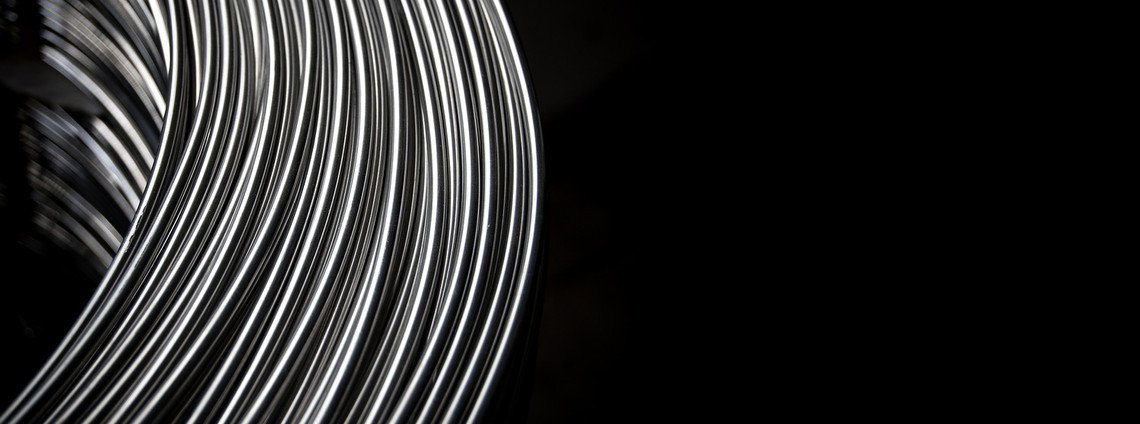Stainless Steel
PROPERTIES OF STAINLESS STEEL
From both the technical and standardization viewpoints, stainless steels are classified, on the basis of their metallurgical structure - related to the type and quantity of the various alloying elements - into four main families; a fifth family - refractory stainless steels - refers to steels used at high temperature, irrespective of metallurgical structure:
- ferritic stainless steels
These are Iron-Chromium or Iron-Chromium-Molybdenum alloys whose chromium content ranges from 10.5% to 28% and whose carbon content does not exceed 0.08%. These steels generally contain no nickel.
They are ferromagnetic and contrary to common belief, the fact that this steel family is ferromagnetic is in no case correlated to poor corrosion resistance! Some grades have, in this area, properties that are similar to or even higher than those of the most common austenitic steels.
Example of grades (as per Standard EN 10088): X6Cr17 - X6CrMo17-1 - X3CrTi17
- martensitic and precipitation hardening stainless steels
These steels generally contain 12% to 19% chromium, their carbon content ranging from 0.08% to 1.2%; they may contain nickel and molybdenum and certain alloy additions such as copper, titanium and vanadium.
These steels can combine good corrosion resistance with mechanical properties equivalent to those of top-of-the-range non-stainless steel alloys. These properties are obtained following appropriate heat treatment: quenching and tempering for martensitic steels, quenching and age-hardening and/or thermo mechanical treatment for precipitation hardening steels.
Example of grades (as per Standard EN 10088):
Martensitic steels: X20Cr13; X46Cr13; X29CrS13
Precipitation hardening steels: X5CrNiCuNb16-4; X7CrNiAl17-7
- austenitic stainless steels
These are by far the best known and the most commonly used of the stainless steels: in addition to a minimum chromium content of approximately 17%, they contain nickel (generally 7% or more) and possibly additions of molybdenum, titanium, niobium, etc.
Their strength mechanical properties are generally average but, for some grades, these can be increased considerably by hardening. On the other hand, they are highly suitable, due to their lack of fragility at low temperature, for cryogenic applications.
Example of grades (as per Standard EN 10088): X2CrNi18-9 - X2CrNiMo17-12-2
- Austenoferritic stainless steels
These steels are characterized by high chromium contents (22% or more) and relatively low nickel contents (3.5% to 8%). A special feature of these steels is their two-phase structure (austenite + ferrite) at ambient temperature, their austenite content ranging between 40% and 60% depending on the grade. They are also called "duplex" steels.
Their strength mechanical properties are higher than those of austenitic steels (approximately 1.2 times for tensile strength and 2 times for elastic limit). They can also be cold hardened. Their corrosion resistance is on the whole greater than that of austenitic steels, especially with respect to generalized corrosion and stress corrosion.
Example of grades (as per Standard EN 10088): X2CrNiN23-4
- refractory stainless steels
Although all stainless steels can - depending on their composition - cover a certain range of high temperatures, the term "refractory" is often used for highly alloyed grades suitable for working temperatures ranging between 900°C and 1150°C (Standard EN 10095).
Examples: X12 CrNi 25-20; X12 CrNi 24-13

